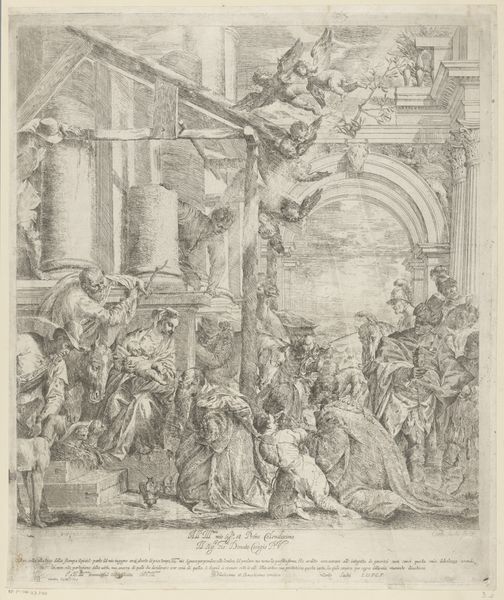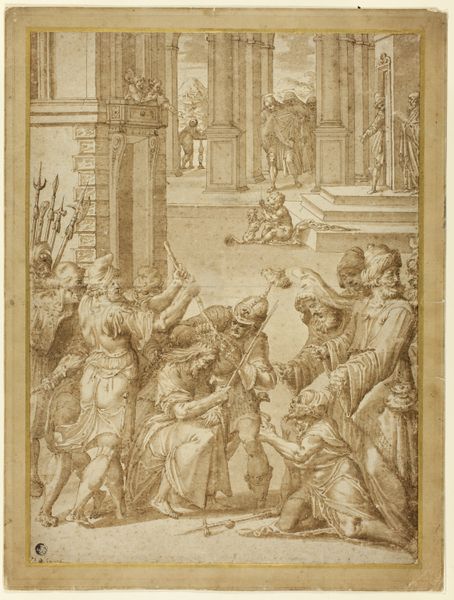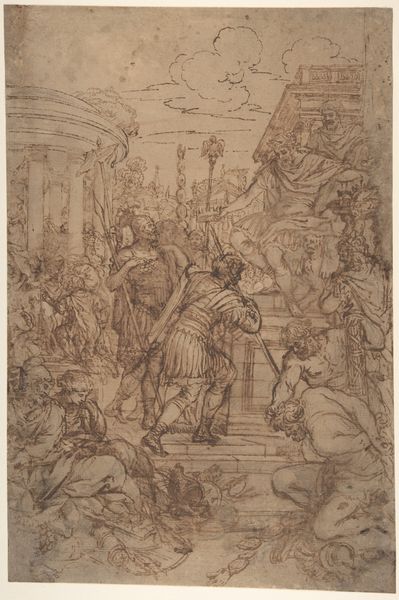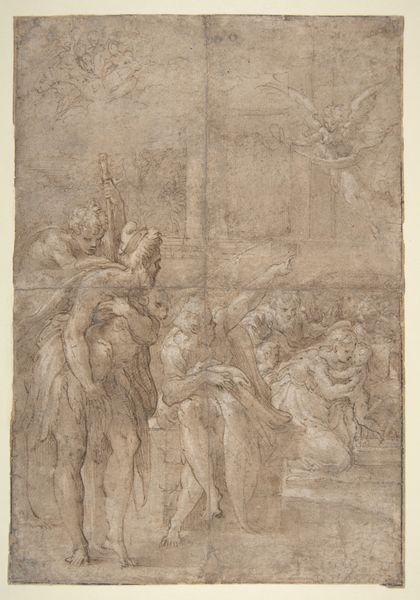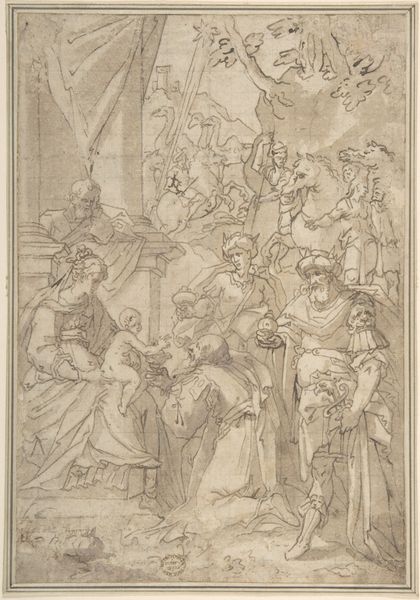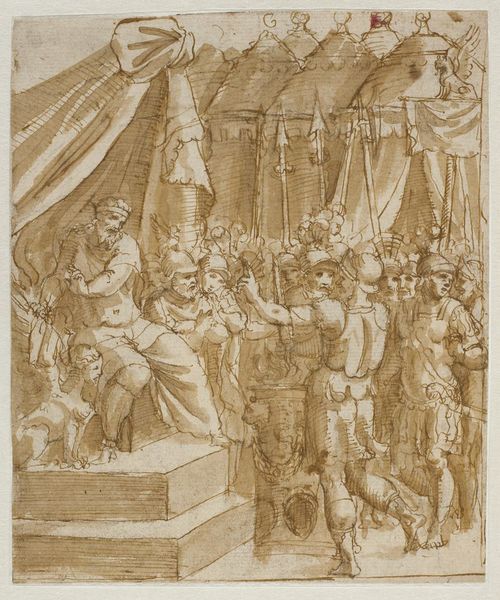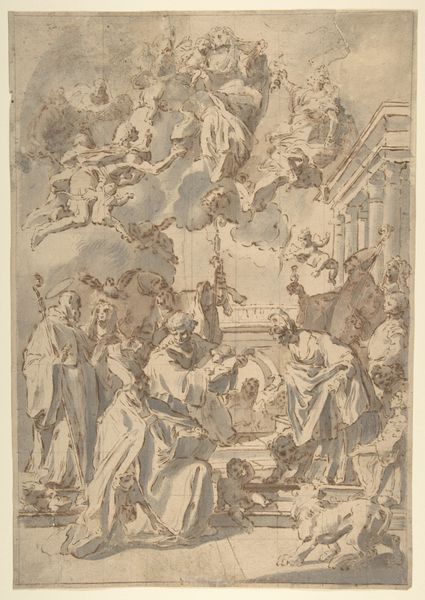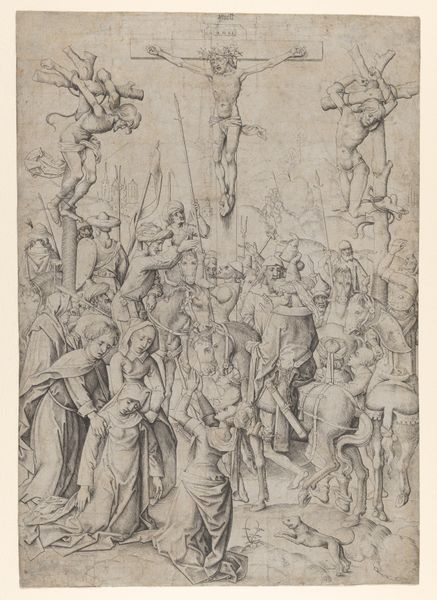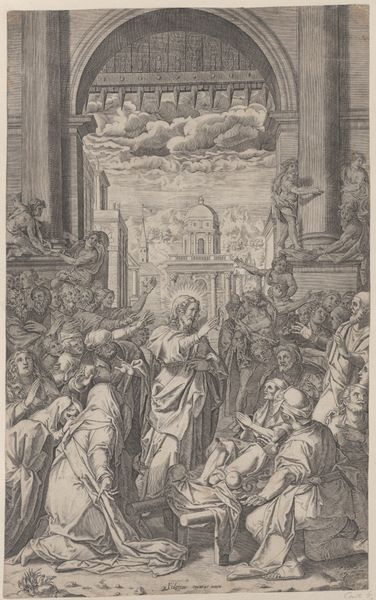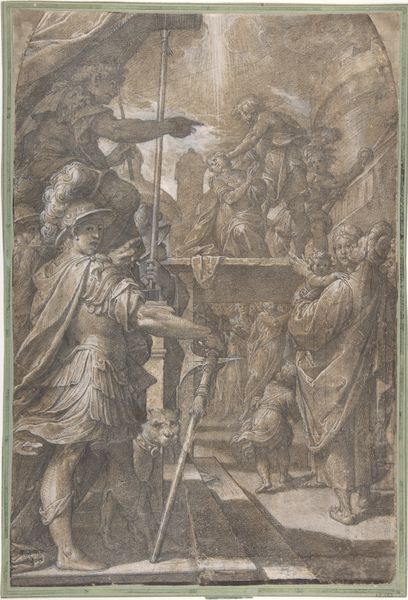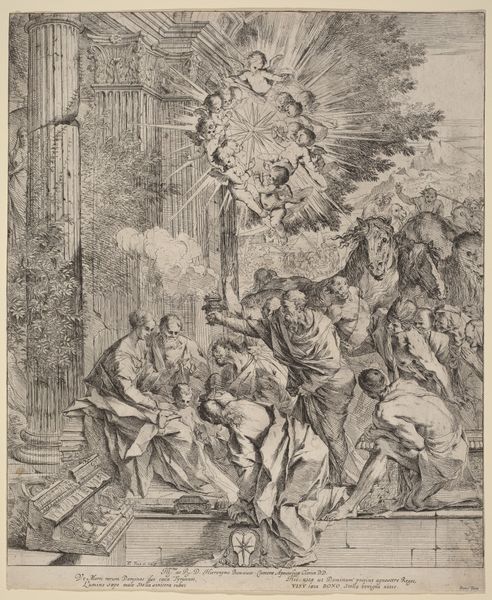
print, etching
#
baroque
# print
#
etching
#
etching
#
figuration
#
history-painting
#
italy
Dimensions: 19 5/8 × 16 1/4 in. (49.85 × 41.28 cm) (sheet)
Copyright: Public Domain
Editor: This is Carlo Andrea Sacchi’s 1649 etching, “The Adoration of the Magi,” currently residing at the Minneapolis Institute of Art. It’s intricate! So much detail packed into a monochrome print. I am curious how history informs this etching’s depiction of the biblical scene. What do you see in this piece, given its historical context? Curator: The piece offers a fascinating window into the power dynamics between the Church and the aristocracy of 17th-century Italy. While seemingly a straightforward depiction of the Adoration, consider its circulation as a print. Prints made the imagery accessible beyond the elite, influencing a broader public understanding of religious narratives and the Church's doctrines. Editor: So the distribution method impacts its historical importance? Curator: Precisely. Furthermore, the choice of this specific biblical scene—the Magi, representing different cultures and social classes, bowing before Christ—suggests a desire for universal appeal, a powerful message during the Counter-Reformation. Notice how the artist emphasizes the rich garments and dignified bearing of the Magi. Editor: It almost feels like an advertisement…but for piety? Were artists often consciously crafting these visual arguments? Curator: It’s a complex relationship. They were craftsmen creating sacred stories that, as it got dispersed, reinforced power structures and moral codes, contributing to both the religious and political climate of the time. How does this historical context shape your view of the work now? Editor: It is now far more layered. What appears to be simply a religious image, carries complex political and social meanings due to its dissemination, style, and the choices that Sacchi made! Curator: Exactly. By looking beyond the surface narrative, we uncover the subtle but pervasive influence of art in shaping historical perceptions.
Comments
minneapolisinstituteofart almost 2 years ago
⋮
Carlo Sacchi was a prolific painter, working mostly in Pavia, a town just south of Milan. He also tried his hand at printmaking. This image, based on a painting by the great Venetian artist Paolo Veronese, may be his first effort as an etcher. Veronese completed his painting in 1573 as a commission for the Venetian parish church of San Silvestro. The painting was still there when Sacchi studied it, but in the 19th century, the church sold the painting to a dealer who in turn sold it to the National Gallery, London, where it remains today. The Adoration of the Magi is skillfully drawn, but the copper plate was lightly bitten, producing a low-contrast image. Sacchi amplified the delicacy of the image by using a burnishing tool to create the heavenly ray of light beaming down on the scene. The print is dedicated to Giovanni Donato Correggio, a Venetian merchant and significant art patron.
Join the conversation
Join millions of artists and users on Artera today and experience the ultimate creative platform.
